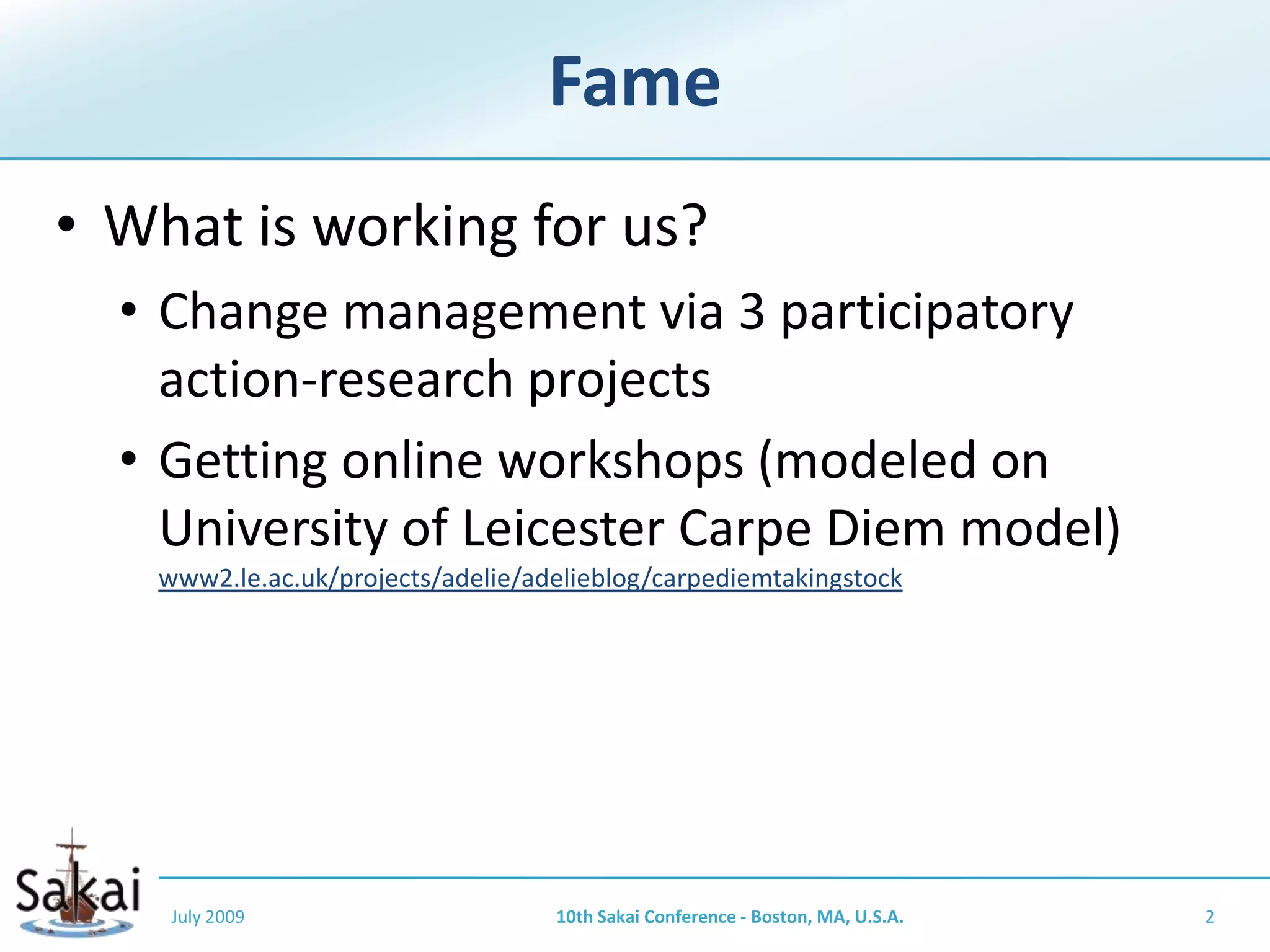The Perils Of Change: When Seeking Improvement Leads To Punishment

Table of Contents
Resistance to Change: Why People Fear Improvement
Change, even positive change, often evokes fear and anxiety. This resistance stems from deeply ingrained psychological responses to uncertainty.
Fear of the Unknown
The human brain naturally gravitates towards comfort and familiarity. Change disrupts this equilibrium, triggering a cascade of anxieties.
-
Loss of Control: Change often feels like losing control over one's work, routine, and even job security. The unknown future breeds uncertainty and apprehension. Studies show that a lack of control is a significant stressor, leading to decreased productivity and even burnout.
-
Comfort Zones: Stepping outside our comfort zones requires effort and vulnerability. Many prefer the predictability of the status quo, even if it's less efficient or effective. This resistance is often subconscious, making it challenging to address.
-
Fear of Failure: Implementing new ideas carries the inherent risk of failure. This fear can be paralyzing, preventing individuals from suggesting improvements or embracing change initiatives. The fear of negative consequences outweighs the potential benefits.
-
Perceived Job Security Threats: Change can trigger anxieties about job security. Employees may fear that new processes or technologies will render their skills obsolete, leading to job displacement or redundancy. This fear is particularly acute during economic uncertainty.
Lack of Communication and Transparency
Clear and consistent communication is crucial for managing change successfully. Without it, rumors and misinformation can spread, fueling resistance and anxiety.
-
Inadequate Information: A lack of information about the reasons for change, its impact, and the timeline creates uncertainty and suspicion. Employees are left to fill in the gaps with their own (often inaccurate) assumptions.
-
Unclear Expectations: Ambiguous goals and expectations leave employees confused and frustrated, making it difficult to adapt to the changes. Clear, measurable goals and expectations are paramount.
-
Rumors and Misinformation: In the absence of official communication, the grapevine thrives, spreading inaccurate information and fueling negativity. This can create a climate of distrust and sabotage change initiatives.
-
Lack of Employee Involvement: When employees feel excluded from the change process, they’re less likely to embrace it. Involving employees in the planning and implementation stages fosters a sense of ownership and buy-in. Active participation reduces resistance and enhances commitment. Effective communication strategies include regular updates, town hall meetings, and open forums to address employee concerns.
The Systemic Barriers to Positive Change
Even with willing participants, systemic barriers within organizations can stifle innovation and punish those who deviate from the norm.
Rigid Organizational Structures
Inflexible hierarchies and bureaucratic processes can actively discourage change.
-
Bureaucracy: Excessive red tape, complex approval processes, and rigid hierarchies can delay or even kill innovative ideas. This can lead to frustration and resentment, particularly among those who champion change.
-
Resistance from Management: Middle management, particularly, can resist change due to a fear of losing control or authority. Their resistance can filter down, creating a climate of fear and discouraging innovation.
-
Lack of Resources: Insufficient resources (budget, time, personnel) can severely hinder change initiatives. Without adequate resources, even the best-intentioned changes can fail.
-
Outdated Systems: Reliance on outdated technology and processes can make it difficult to implement new initiatives. Legacy systems can create bottlenecks and hinder efficiency. Successful organizations often invest in upgrading their technology and processes to support change initiatives.
Lack of Resources and Support
Insufficient resources can sabotage well-intentioned changes before they even get off the ground.
-
Insufficient Training: Employees need adequate training to adapt to new processes and technologies. Without proper training, change initiatives can fail due to a lack of employee competence.
-
Inadequate Technology: Outdated or insufficient technology can create obstacles and hinder the implementation of new processes. Investing in appropriate technology is crucial for supporting change.
-
Insufficient Budget Allocation: Change initiatives require adequate funding to cover training costs, technology upgrades, and other expenses. Insufficient funding can severely limit the success of any change effort.
-
Lack of Management Support: Visible and consistent support from senior management is essential for change initiatives to succeed. Without leadership backing, change initiatives lack momentum and are vulnerable to resistance.
Navigating the Perils of Change: Strategies for Success
Overcoming the perils of change requires a proactive approach, focusing on building a supportive environment and implementing effective change management strategies.
Building a Culture of Psychological Safety
Creating an environment where employees feel safe to take risks and propose improvements is paramount.
-
Open Communication Channels: Establish multiple channels for open and honest communication, ensuring that employees feel comfortable sharing their ideas and concerns without fear of retribution.
-
Feedback Mechanisms: Implement systems for gathering and acting upon employee feedback, demonstrating that their input is valued and considered.
-
Employee Empowerment: Empower employees to take ownership of change initiatives, giving them the autonomy to make decisions and implement solutions.
-
Celebrating Successes: Publicly acknowledge and celebrate successes, reinforcing the value of taking risks and embracing change.
-
Learning from Failures: Create a culture where failures are seen as learning opportunities, not as personal failings. Analyze what went wrong, extract lessons, and adjust future strategies accordingly.
Change Management Best Practices
Effective change management involves a structured approach, with clear goals, strong communication, and ongoing support.
-
Develop a Clear Change Vision: Articulate a compelling vision for change, outlining the benefits and reasons for the initiative. This vision should inspire and motivate employees.
-
Involve Employees in the Process: Include employees in the planning and implementation phases, giving them a voice and sense of ownership.
-
Provide Adequate Training and Support: Offer comprehensive training and ongoing support to help employees adapt to new processes and technologies.
-
Celebrate Wins: Acknowledge and celebrate milestones along the way, maintaining momentum and reinforcing positive outcomes.
-
Monitor Progress and Adjust as Needed: Regularly monitor progress, gather feedback, and adjust the change strategy as needed to address challenges and ensure success. Models like Kotter's 8-step process provide a valuable framework.
Conclusion
The perils of change arise from a combination of factors: resistance stemming from fear of the unknown, lack of communication, and rigid organizational structures that stifle innovation. However, by proactively building a culture of psychological safety and implementing effective change management best practices, organizations can mitigate these risks and create an environment where improvement is not only accepted but actively encouraged. Don't let the perils of change stifle your organization's growth. Implement these strategies today to create a culture that embraces innovation and rewards improvement. By addressing the fears and systemic barriers, you can transform the experience of change from a source of anxiety to one of opportunity and growth.

Featured Posts
-
 Nasledie Nashego Pokoleniya Chto My Ostavili Buduschemu
May 25, 2025
Nasledie Nashego Pokoleniya Chto My Ostavili Buduschemu
May 25, 2025 -
 Porsche Investicijos I Elektromobiliu Infrastruktura Europoje
May 25, 2025
Porsche Investicijos I Elektromobiliu Infrastruktura Europoje
May 25, 2025 -
 Escape To The Countryside A Step By Step Relocation Plan
May 25, 2025
Escape To The Countryside A Step By Step Relocation Plan
May 25, 2025 -
 Porsche 911 Melyrehato Nezet Az 80 Millios Extrakra
May 25, 2025
Porsche 911 Melyrehato Nezet Az 80 Millios Extrakra
May 25, 2025 -
 Net Asset Value Nav Explained Amundi Msci World Ii Ucits Etf Usd Hedged Dist
May 25, 2025
Net Asset Value Nav Explained Amundi Msci World Ii Ucits Etf Usd Hedged Dist
May 25, 2025
Latest Posts
-
 Actress Mia Farrow Seeks Trumps Imprisonment Following Venezuelan Deportation Controversy
May 25, 2025
Actress Mia Farrow Seeks Trumps Imprisonment Following Venezuelan Deportation Controversy
May 25, 2025 -
 Overnight Disasters 17 Celebrities Whose Careers Imploded
May 25, 2025
Overnight Disasters 17 Celebrities Whose Careers Imploded
May 25, 2025 -
 From Fame To Shame 17 Celebrity Downfalls
May 25, 2025
From Fame To Shame 17 Celebrity Downfalls
May 25, 2025 -
 17 Famous Faces How One Mistake Ruined Their Reputations
May 25, 2025
17 Famous Faces How One Mistake Ruined Their Reputations
May 25, 2025 -
 The Woody Allen Controversy Sean Penns Stance And The Resurfacing Of Abuse Claims
May 25, 2025
The Woody Allen Controversy Sean Penns Stance And The Resurfacing Of Abuse Claims
May 25, 2025
